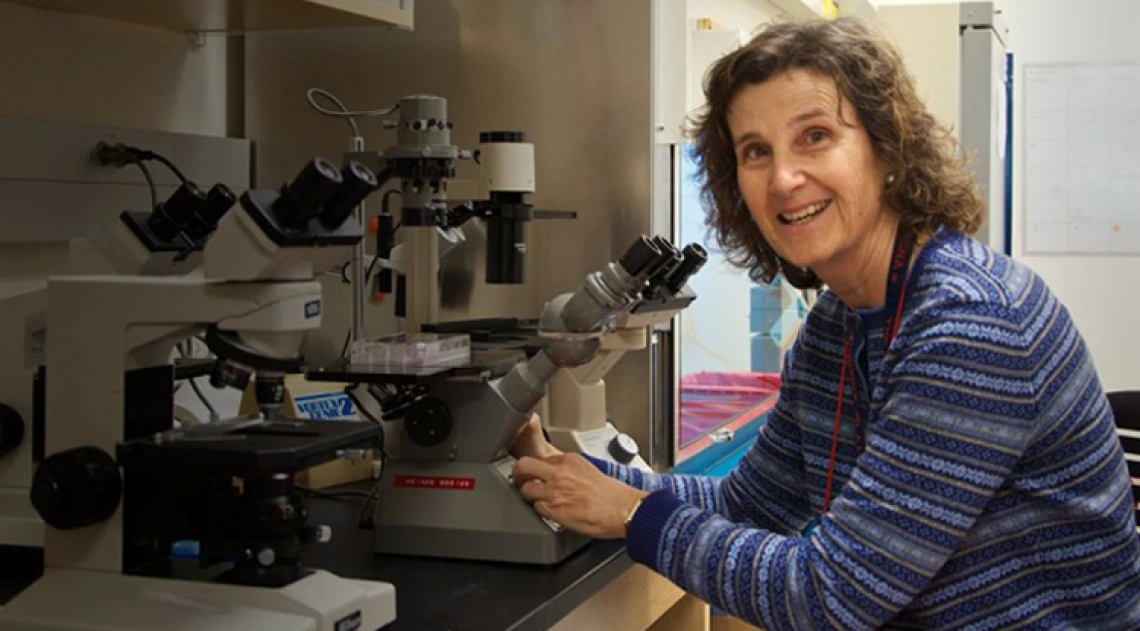It's A Wonderful — But Challenging — Day In The Microbe Neighborhood

What’s circulating in the air? Embedded and active in the soil? A part of living creatures, great and small – including us? The answer is microbes, and they outnumber human cells in each person’s body by 10-to-1. The news is both good and bad as they are needed but can create havoc if left uncontested as potential allergens.
In a recent Search For Certainty Series lecture sponsored in part by the Honors College, Dr. Donata Vercelli’s research explored the root causes of protective immune responses, with the potential to counter the widespread and devastating impact of childhood asthma. At a societal cost well above that of AIDS and tuberculosis combined, there’s reason to persist as Dr. Vercelli has done in collaboration with peers from Chicago, Indiana, and Germany.
Since her February 12th talk, a fast-paced interview with this professor of cellular and molecular medicine further illuminated her work with microbes in dirt. As well as helped to understand the recent surge in popular interest in the broader topic of an ever-present, invisible world in which we all live.
Dr. Vercelli, what misconceptions still persist about microbes and their roles in our bodies?
The average citizen is very diffident, seeing microbes as uniformly bad enemies. In many cases, they are grouped together as being extremely similar, even the same. Truly, no aspect of our lives is immune to their influence: They have a lot to do with our lives, lifestyles and diseases. Greater attention is being paid to microbes as of late, with features in the New York Times appearing once a month or even more frequently.
There’s a lack of understanding of the positive and negative consequences of microbes in and around us. What’s more, the knowledge yet to be gained is significant and far-reaching.
How can non-medical students learn more about this vital area of human life and health?
Good general articles are regularly published in Nature and Scientific American. More of the popular press is covering microbes as a hot topic as well. There’s surprise that, in this day and age, we can discover a humongous world, the existence of which we largely ignored despite our scientific prowess.
In addition, microbes can be manipulated in ways that can lead to applications infusing our everyday lives; forensics to medical treatments to even affecting the soil for more productive agriculture.
Doctor, what are the big questions you're exploring right now?
Most of them center on the interactions between the microbial environment and the immune system. The goal is to better understand the biology in us to create a healthy set of beneficial microbiota. My intellectual trajectory started with studying allergic reactions many years ago. Because it is a tightly regulated antibody in mammals, it provides an ideal model to isolate and study as we dissect signals, along with their effects, in a profound way.
Allergies affect at least 30% of the population, with asthma being the most common disease in children. The connection did not escape my attention as I continue to pursue problems that are relevant.
How can answering these questions affect the way we live our everyday lives?
The whole point here is that we are discovering a situation that’s happening in real life, where a vast group of children are protected. In the case of those we studied, they were Indiana Amish children living close to livestock and agriculture. If we can understand what is happening, it becomes possible to extend this kind of protection -- and prevention, even -- to all children.
Working across locations and groups that included farming Hutterites in South Dakota, differences became clearer as did the potential for real improvements in human health.
Where is research moving at present -- and what professional options does it open up to students?
There are many possible directions that start with understanding microbes inside and outside the human body: Discovering what disease-provoking microbes can be stopped or guarded against. Looking to apply these learnings in practical ways. This is a transdisciplinary project if ever there was one filled with dozens of potential career paths.
The next step is to make it a reality. We know we can (find practical solutions), and that the goal is attainable. These children walk this Earth. Let’s not stop until we’ve succeeded in helping them live better lives.

